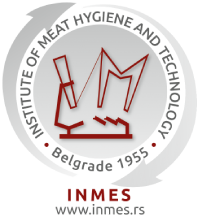STEC in the beef chain – One Health Approach
Abstract
Since the early 1980s, E. coli O157 has emerged as one of the most signifi cant pathogens of public health relevance not because of the incidence of the illness, which is much lower than that of other food borne pathogens such as Campylobacter or Salmonella, but because of the severity of the symptoms, the low infectious dose and potential sequelae. Shiga toxin – producing (STEC) Escherichia coli is a human pathogen that can cause hemorrhagic colitis (bloody diarrhea) and sometimes hemolytic uremic syndrome (HUS), a life-threatening disease that causes kidney damage. Cattle carry mixtures of O157 and non-O157 STEC in their intestines that are not necessarily pathogenic to humans. The O157 STEC serogroup was until recently responsible for the majority of disease outbreaks reported for STECs in North America,
however now the non-O157 STECs account for almost 50% of the reported human disease outbreaks in North America and Europe. The STECs are shed at significant levels by healthy/asymptomatic cattle, e.g.
cattle with jejunal hemorrhage syndrome. The shedding leads to contamination of the farm environment. This may lead to direct or indirect contamination of cattle hides, which, in turn, can serve as the main source of carcass contamination during slaughter and dressing of cattle at abattoirs or contamination of fresh beef and beef products. A science-based risk assessment is needed to assess the public health impact, the consumer exposure to the pathogen and for design of the most effective risk mitigation strategies regarding prevention and reduction of beef-borne O157 and non-O157 STECs.





